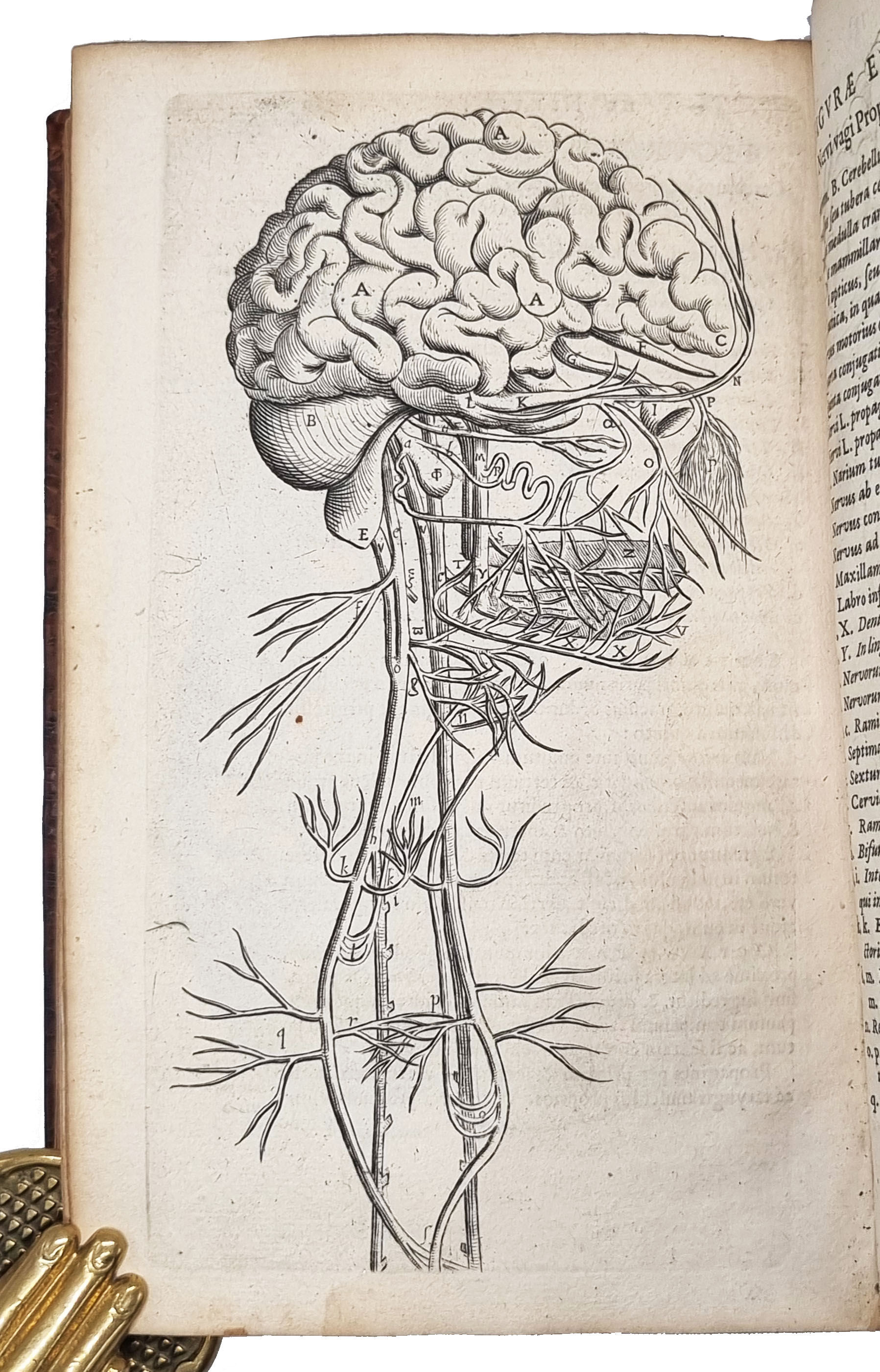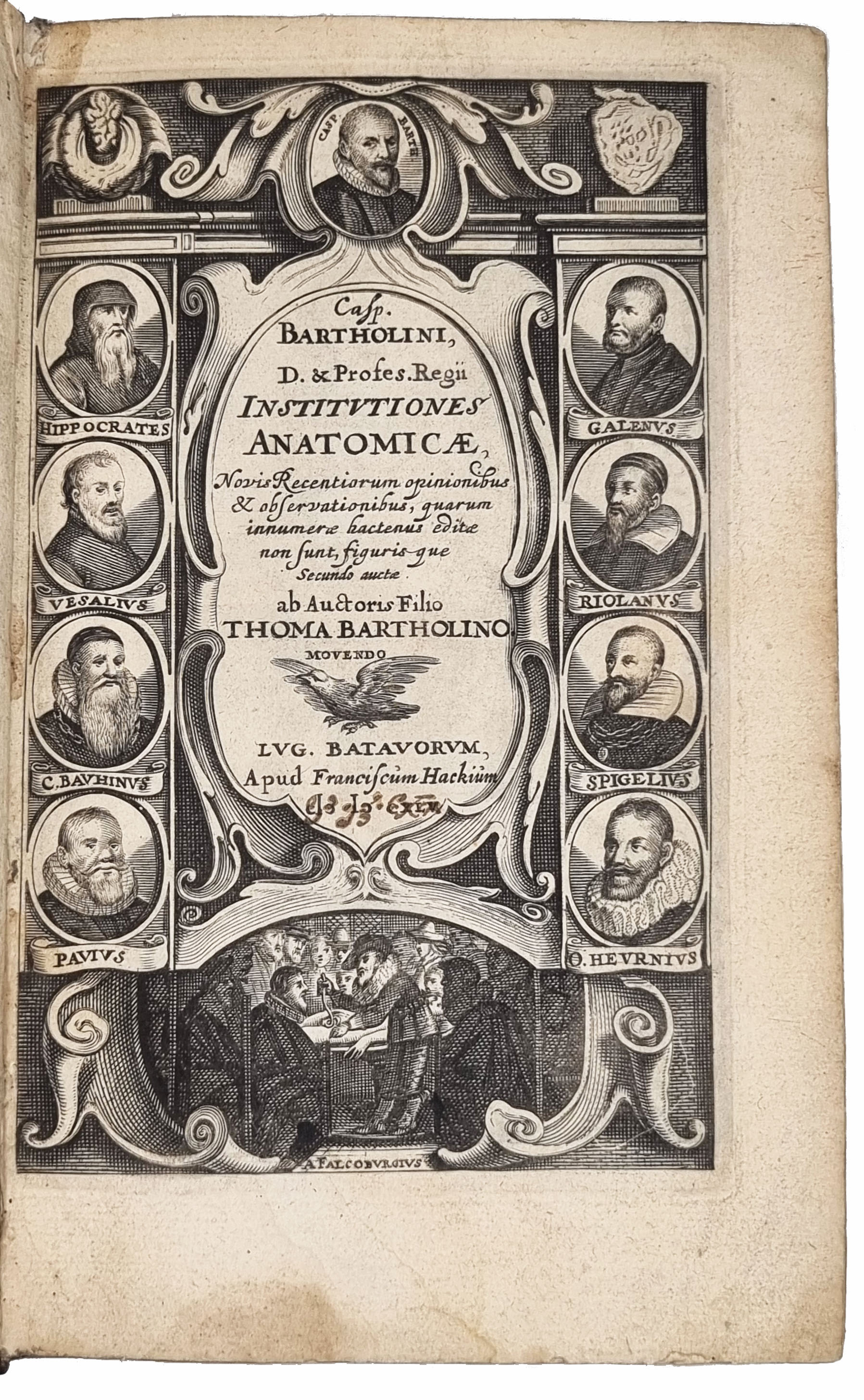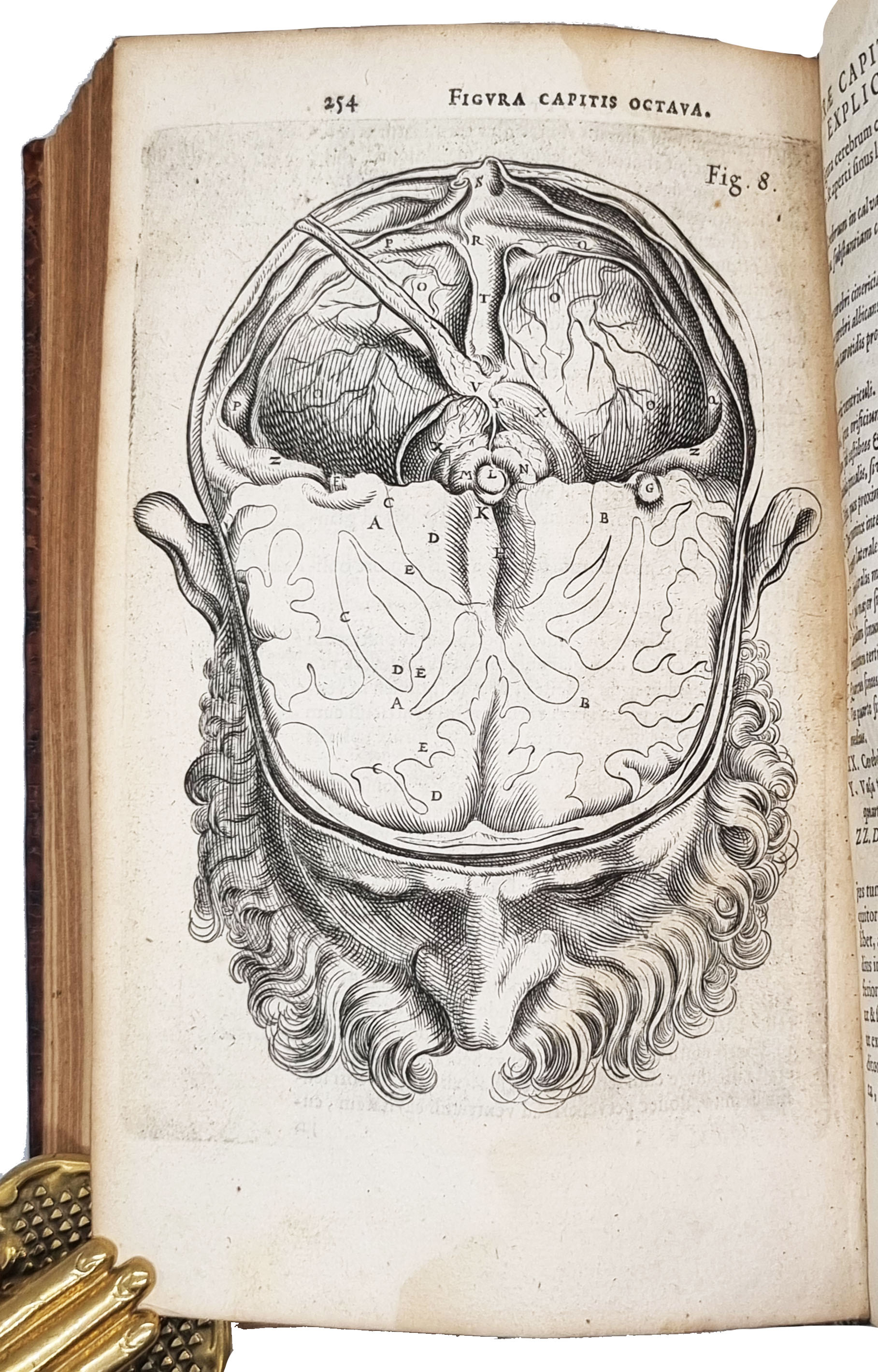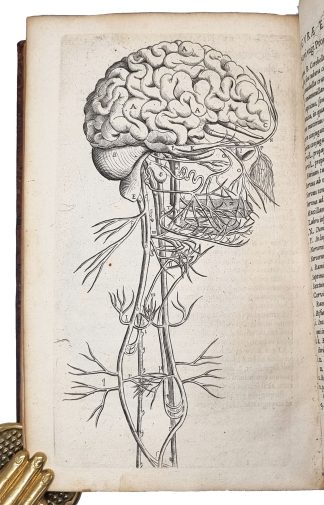BARTHOLIN, CASPAR.
OLIVIER’S COPY
Institutions Anatomiques de Gasp. Bartholin…Par Thomas Bartholin.
Paris, Mathurin Henault, 1647.£4,750.00
4to. Pp. (xvi) 656 (xxxviii). Roman letter. 85 engravings and plates, mostly full page, inc. frontispiece, portrait and anatomical diagrams, 2 folding. Frontispiece with famed men of science surrounding text, portrait of Thomas Bartholin to recto of tp, historiated and ornamental head pieces and initials. C1900 bookplate of Doctor Eugene Olivier (1881-1964) to pastedown with ex dono by Olivier dated 1923. Very light foxing or spotting, slight age yellowing, p. 464 engraving not printed, engravings in very good strong impression, lighter to folding plates. A most attractive copy, large and clean, in C1900 red morocco, gilt dentelles at corners in the style of Augustin Duseuil, spine gilt with five raised bands, aer.
Important augmented and enriched edition of Caspar Bartholin’s 1611 anatomical masterpiece, published by his son Thomas Bartholin (1616-1680). The Bartholin family formed an extraordinary medical dynasty, publishing prolifically and contributing vastly to the world of medicine for generations. Bartholinsgade, a street in Copenhagen, is named after the family as well as the Bartholin Institute and a building at the University of Aarhus.
Caspar Bartholin the Elder (1585-1629) was born at Malmø, then a part of Denmark. He was a child prodigy, learning to read aged three and composing Greek and Latin oratory at aged thirteen. He became professor of medicine at the University of Copenhagen, later switching to Theology following a serious illness. His work, Anatomicae Institutiones Corporis Humani, 1611, became the standard textbook on the subject of anatomy in Europe. In this, he was the first to describe the workings of the olefactory nerve. Thomas Bartholin followed his father’s footsteps, becoming a professor at the University of Copenhagen in History. He was also a prolific medical man, best known for the discovery of the lymphatic system in humans and the serious advancements he made in the theory of refrigeration anaesthesia, used when amputating major limbs. Thomas credits the invention of this technique to Marco Aurelio Severino of Naples, who used snow and ice on body parts that required anaesthetic. Thomas learned this on a trip to Naples. He was appointed by King Christian V of Denmark as his personal physician.
This work follows Caspar Bartholin’s original, but Thomas’s own medical discoveries and innovations are added, as well as William Harvey’s theory of blood circulation and Thomas’s work on the lymphatic system. Thomas discovered for the first time the Bartholin-Patau syndrome, a congenital syndrome caused by trisomy 13 (an extra chromosome). Chapters of the work explore musculature, membranes, veins, organs, female and male genitals and bodily fluids as well as a large section on the nervous system. A final section contains letters from Monsieur Jean Walaeus to Thomas Bartholin concerning the movement of blood and chyle through the body. Engravings are numerous and exhibit detailed illustrations of organs, vein, artery and nervous systems and skeletal structure. An impressive and wide ranging masterwork on the human body and its functions.
On the 1641 Leiden edition, “The Bartholin family…made many contributions to Danish medicine during the seventeenth century when ducts, glands, and blood vessels were recognised as conduits for body fluids rather than as static tubes or resevoirs” (Heirs of Hippocrates).
Dr Eugene Olivier was the author of one of the standard French bibliographies on coats of arms as well as an Olympic fencer, physician and professor. This work must have informed Olivier’s expertise as Professor of Anatomy, as well as his training in surgery and anaesthesia at the Hôpital Saint-Louis. He later was the head of the Paris Faculty in the Anatomy department and published numerous anatomical works. The red morocco binding was probably produced for his library.
Wellcome .b13132921; NLM 2306007R; This work not in Garrison & Morton or Osler, this edition not in Heirs of Hippocrates.In stock





